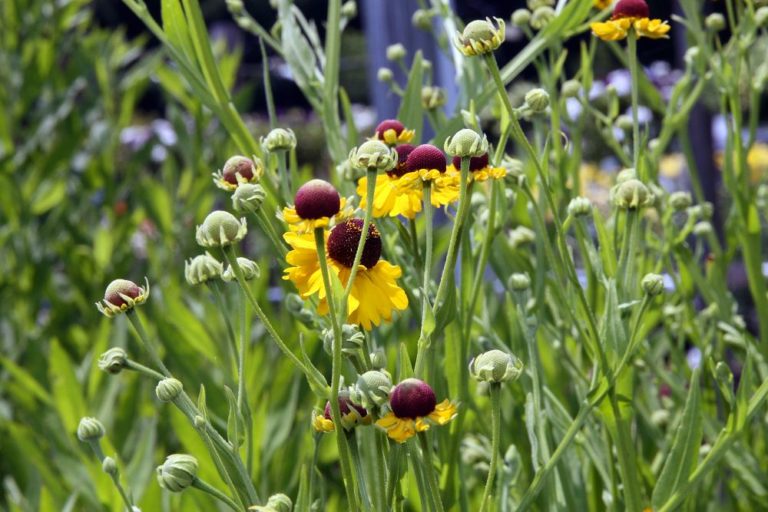This plant is not currently for sale. This is an archive page preserved for informational use.
Purple-Headed Sneezeweed is a winning native perennial, found in wet, sunny habitats in the Eastern half of the U.S. In NC, it is reported to occur in scattered counties in the mountains, piedmont and coastal plain. It is popular because the flowers are charming in the garden or the naturalized meadow as well as in flower arrangements. Their spherical or thimble–shaped brown/purple flower centers, surrounded by gracefully drooping, bright yellow petals (resembling a lady’s skirt), occur at the tops of the winged stems. It is easily distinguished from other members of the Asteraceae by its spherical or thimble-shaped brown/purple center of disk florets, the 3-lobed, drooping ray florets, and the highly winged stems. Sneezeweed is happiest grown in full sun when the soil is well-moistened, but not highly fertilized. Even in full sun and lean soil, it benefits from being cut back in early summer to make it a sturdier and more floriferous plant. Purple-Headed Sneezeweed will stay in bloom from mid-summer to early fall, about 2 months, attracting butterflies and birds to its nectar and seeds. We had to look up why its called Sneezeweed: apparently the dried stem and leaves can be crushed into a powder and used as snuff.

